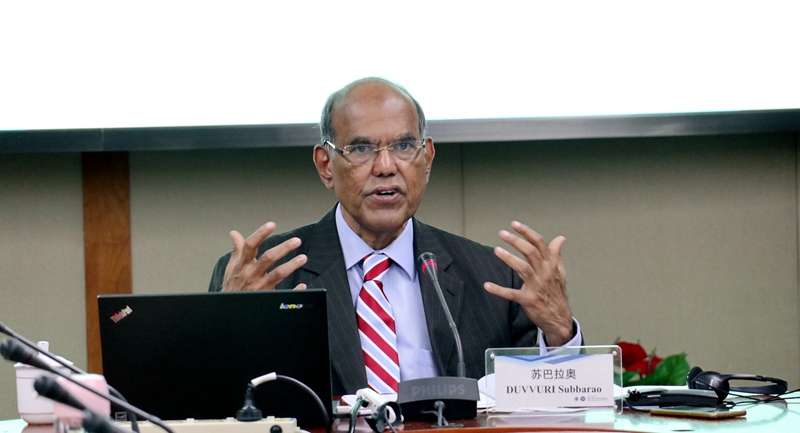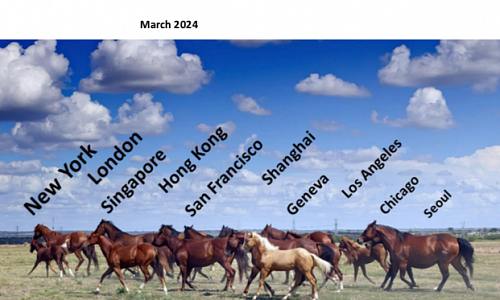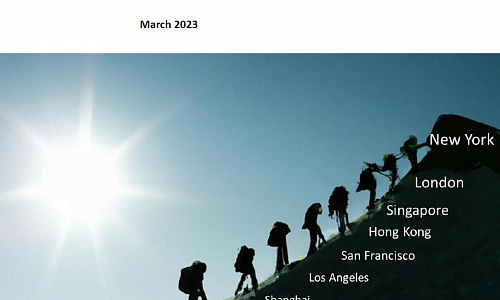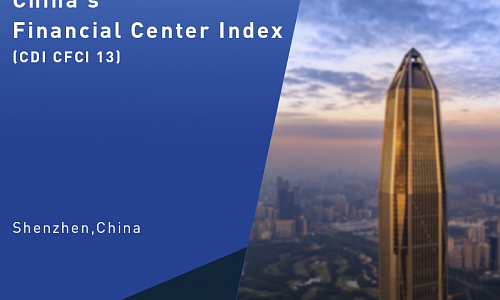Construction of Industrial Parks Drives Cote d 'Ivoire's Economic Growth
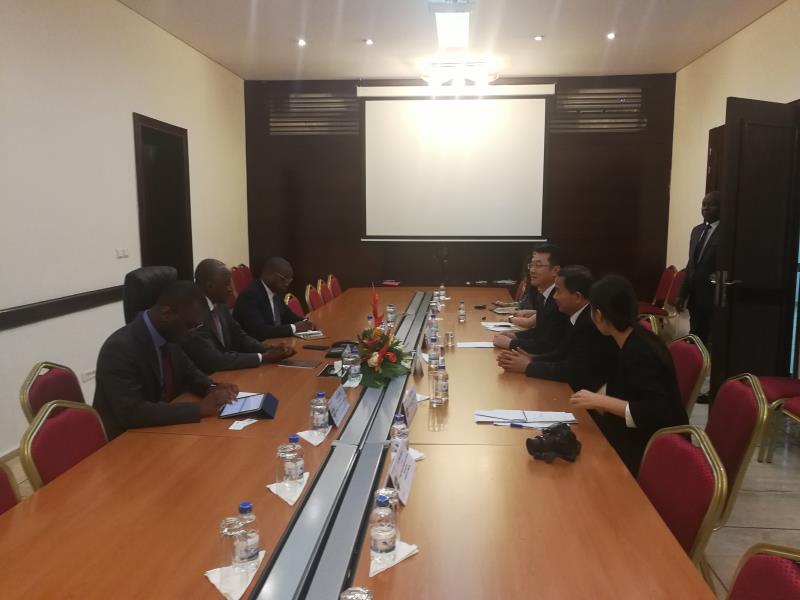 August 3, 2018, accompanied by Chinese ambassador to Cote d 'Ivoire, Tang Weibin, CDI delegation met with Prime Minister of Cote d 'Ivoire, Amadou Gon Coulibary, in Abidjan, to exchange views on the planning and construction of industrial parks in Cote d 'Ivoire.
August 3, 2018, accompanied by Chinese ambassador to Cote d 'Ivoire, Tang Weibin, CDI delegation met with Prime Minister of Cote d 'Ivoire, Amadou Gon Coulibary, in Abidjan, to exchange views on the planning and construction of industrial parks in Cote d 'Ivoire.
CDI delegates introduced their feasibility research on industrial parks in Cote d 'Ivoire, and shared insights in terms of preferential policies, industry selection system, space layout, development mode and economic measurement.
Ivorian government attached great importance to the construction of industrial parks and agreed to develop agricultural processing, agricultural machinery and electronic products assembly supported by industrial parks, said PM Coulibary. Chinese enterprises and investments were extremely welcomed into the industrial parks in order to invigorate cotton-textile processing and other industries, as well as further boost local economic and social development.
Amb. Tang Weibin briefly introduced preparation progress of Beijing Summit of the Forum on China-Africa Cooperation. And he thought that PM Coulibary’s visit to China would further advance bilateral relations between China and Cote d 'Ivoire.
China-India Cooperation under BRICS Framework
Information
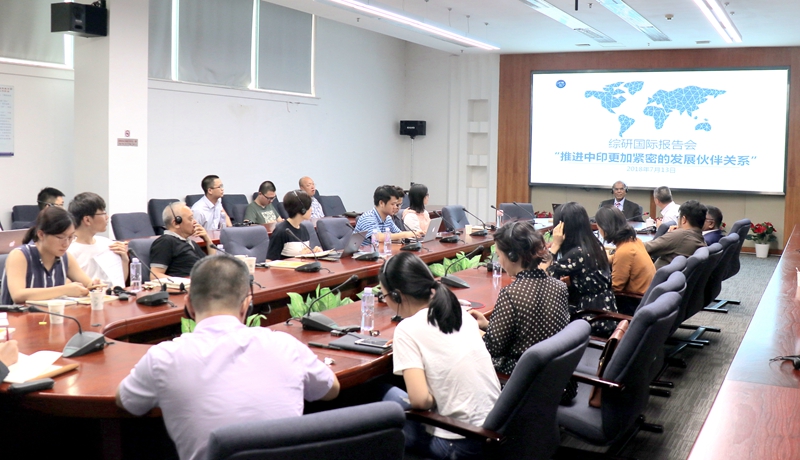 Theme: China-India Cooperation under BRICS Framework
Theme: China-India Cooperation under BRICS Framework
The new decade heralds a golden age for BRICS countries. To promote China-India trade ties in the spirit of pursuing mutual benefits and win-win results will inject new vitality into the China-India relation and cooperation among BRICS countries.
In the context, how can China and India synergize Belt and Road Initiative with Make in India? How can the two developing countries work together to engage into global supply chain and move up on the global value chain? How can they cement cooperation in emerging industries?
Date: July 13, 2018
Venue: Room 101, CDI Mansion, Shenzhen
Host: CDI
Promotion and Policy Support to New Energy Vehicle in Shenzhen
 Thanks to the successful experience of introducing new energy vehicles to public transport, the Gyeonygi Research Institute delegate paid CDI a visit and had discussion on the development of new energy application in China. CDI delegate believed, to forge the sustainable development of electrifying transportation, government ought to improve relevant technic to upgrade the quality of vehicles including batteries, electric machinery and etc. to meet the current needs. In the meanwhile, the maintenance efforts will also need the reinforcement and supervision.
Thanks to the successful experience of introducing new energy vehicles to public transport, the Gyeonygi Research Institute delegate paid CDI a visit and had discussion on the development of new energy application in China. CDI delegate believed, to forge the sustainable development of electrifying transportation, government ought to improve relevant technic to upgrade the quality of vehicles including batteries, electric machinery and etc. to meet the current needs. In the meanwhile, the maintenance efforts will also need the reinforcement and supervision.
Financial Cooperation under Belt and Road Initiative
 On July 10, 2018, CDI and PanamAsia, an international financial service company jointly hosted a routable themed on the financial cooperation under Belt and Road Initiative. In terms of lowering the financial risks of the Belt and Road Initiative project, both parties believed that the project should attract more public and non-governmental capital. What is more, the representatives of PanamAsia pointed out that numerous of French enterprises are anxious to be involved in the projects along the Belt and Road Initiative, therefore, being more transparent would bring more opportunities to Belt and Road Initiative.
On July 10, 2018, CDI and PanamAsia, an international financial service company jointly hosted a routable themed on the financial cooperation under Belt and Road Initiative. In terms of lowering the financial risks of the Belt and Road Initiative project, both parties believed that the project should attract more public and non-governmental capital. What is more, the representatives of PanamAsia pointed out that numerous of French enterprises are anxious to be involved in the projects along the Belt and Road Initiative, therefore, being more transparent would bring more opportunities to Belt and Road Initiative.
Weak Yuan Compensating for Potential Trade War Losses
 GDP was up 6.8% y/y in H1, the same rate as in H2 2017. Industrial output was up 6.7% y/y, up 0.4 pps from H2 2017.
GDP was up 6.8% y/y in H1, the same rate as in H2 2017. Industrial output was up 6.7% y/y, up 0.4 pps from H2 2017.
Fixed asset investment was up 6% y/y in H1, down 2.6 pps from H1 2017, and up only 0.3% y/y in real terms, down 3.5 pps from last H1. The major drop of state investment is likely the main cause. Possibly following the government’s deleverage reform to reduce financial risk, state investment rose only 3% y/y, down 9 pps from H1 2017. In H1 2018, retail sales of social consumption goods rose 9.4% y/y in nominal terms, and grew 7.7% y/y in real terms, down 1 and 1.4 pps from H1 2017.
CPI was very stable in H1. It rose 2.2% y/y in Q1, and 1.8% y/y in Q2, the same rate as in Q4 2017. In H1, growth rates for producer prices weakened in February-March but rebounded strongly in May-June. In June, the ex-factory price index of industrial goods rose 4.7% y/y, up 0.6 pps from May, and increased 0.3% m/m. PPI rose 5.1% y/y, up 0.8 pps from May, and increased 0.4% m/m. Tightening monetary policy puts constraints on prices’ future growth.
At the end of June, M2 was up 8% y/y, down 0.3 pps from May, and down 1.4 pps from last June. It reached a historically low new rate. Saving deposits rose 5.5% y/y, down 0.2 pps from May, and down 5.2 pps from last June. Stricter financial regulation is the main cause for cooling financial indicators.
Exports were up 4.9% y/y, down 10.1 pps from H1 2017. Imports were up 11.5% y/y, flat on H1 2017.
From April to June, the Chinese yuan depreciated against the dollar at monthly rates of 0.9%, 1.5%, and 3.5%. The yuan has been depreciating against other currencies at the same time, while the trade war with the United States intensifies. The latest episode was on July 20th, when U.S. President Donald Trump threatened to levy tariffs on every good imported from China, referring to the $505.5 billion in Chinese imports the U.S. took in last year. Trade and U.S.-China relationship uncertainty might explain the yuan’s depreciation. However, yuan depreciation may compensate partially for Chinese exports to the United States during the trade war. Moreover, depreciation can boost Chinese exports to other countries. With net exports taking only a small share of Chinese GDP, we don’t expect the trade war to negatively impact the Chinese economy much.
Downward Pressure on Growth
 Growth is facing downward pressure. Chinese fixed asset investment, a key growth driver, was up by a new low of just 3.9% y/y in May, and down 3.6 pps from Q1, as U.S. President Donald Trump announced that the United States would apply tariffs of 25% to roughly $50 billion worth of Chinese goods. A trade dispute between the world’s two largest economies will surely add uncertainty to the global market, and to Chinese domestic investment and economic growth as well. It’s still too early to measure the size of this impact, but we’d like to argue that trade’s direct effect on Chinese growth won’t be large, given trade’s small net share in Chinese GDP.
Growth is facing downward pressure. Chinese fixed asset investment, a key growth driver, was up by a new low of just 3.9% y/y in May, and down 3.6 pps from Q1, as U.S. President Donald Trump announced that the United States would apply tariffs of 25% to roughly $50 billion worth of Chinese goods. A trade dispute between the world’s two largest economies will surely add uncertainty to the global market, and to Chinese domestic investment and economic growth as well. It’s still too early to measure the size of this impact, but we’d like to argue that trade’s direct effect on Chinese growth won’t be large, given trade’s small net share in Chinese GDP.
Value added for major industrial firms was up 6.8% y/y in May, slightly lower than in April. Retail sales of social consumption goods were up 8.5% y/y in nominal terms, and 6.9% y/y in real terms, the lowest rates since 1999. Imports grew much faster than exports. Exports rose 3.2% y/y, still on a declining trend since June 2017, and down 4 pps from Q1. Imports were up 15.6% y/y, and up 3.7 pps from Q1.
But M1 rose 6% y/y at the end of May, a new low, down 1.2 pps from April. This downward cycle of M1 growth started in August 2016, and has been continuing for 22 months, a situation mostly attributed to a new financial regulation to curb systemic risk. CPI growth, up 1.8% y/y, was flat. Producer prices rebounded powerfully, after three months of decline. The ex-factory price index of industrial goods was up 4.1% y/y, up 0.7 pps from April. PPI rose 4.3% y/y, up 0.6 pps from April. However, we expect producer price appreciation won’t be sustainable amid tightening monetary policy.
China’s integration with the rest of world shows no sign of slowing, the U.S.-China trade war notwithstanding. Chinese domestic investors made $47.89 billion in non-financial ODI in 2,987 overseas companies in 149 countries and regions between January and May, rising a robust 38.5% y/y. The rare decline of ODI growth in 2017 is mainly due to government regulations to curb financial risks, and financial extension of the anti-corruption campaign. The Belt and Road Initiative mainly invests in infrastructure. The economic return should be long term, and should also benefit China from a geopolitical strategy perspective. Countries disappointed in Trump’s retreat from globalization may also become more welcoming to China.
China-ASEAN Think Tanks Seminar
Venue: Junior Ballroom, InterContinental Kuala Lumpur Host: CDI and Asian Strategy & Leadership Institute (ASLI) Theme: Experience, Challenges and Opportunities – How to Reach Agreement on RCEP If completed, the Regional Comprehensive Economic Partnership (RCEP) will create the world's largest free trade area, covering almost half of the world’s population and contributing about 30 per cent of global GDP. The Ministers from the 16 RCEP participating countries reaffirmed their resolve to meet the Leaders’ instruction to intensify efforts in 2018 towards the conclusion. The 11 remaining countries in the Tans-Pacific Partnership (TPP) have forged ahead with a new deal without the United States. What does this mean to the RCEP? Should the RCEP still move on? What should be done to push forward the RCEP? What are the differences between the RCEP and the TPP? Although the potential future economic scenario is good, the RCEP is still confronted with obstacles and challenges. It takes time to negotiate a new set of rules and obligations, such as tariff rates, intellectual property rights, trade and investment etc. In spite of this, the flexible and pragmatic approach of the RCEP is expected to be more suitable for the developing countries in Asia. In order to push forward the RCEP negotiation, countries in the region need to exert effort on proposing constructive suggestion. How can the RCEP build on the experience of the TPP? What challenges will the RCEP be faced with in the course of future talks? What opportunities will the RCEP deliver for the 16 RCEP participating countries? These are the focus for the discussion during the meeting.
Information
 Date: June 22, 2018
Date: June 22, 2018
Independent innovation and consumption updating are two key points for China’s long-term economic growth
 Author: Fan Gang, President of CDI
Author: Fan Gang, President of CDI
Editor’s note: In terms of the recent Sino-US trade friction, Prof. Fan Gang thinks that it can be solved, only not with a single agreement, but step by step with multiple negotiations. In the long run, China should strengthen incentive mechanism for technology innovation to better foster independent innovation.
- On the current economic situation
Over the past 40 years, China’s economy has seen fluctuating high growth, while still in the process of adjustment. There are two views about the current economic situation. Optimists think that a new cycle is coming, while pessimists think that deleveraging and regulation will lead to tight liquidity. I’m not that optimistic, I don’t think that China’s economy is entering a new cycle now, and a lot of problems remain unresolved, including deleveraging and de-capacity. The resent reduction in reserve ratio released liquidity and restored it to its proper level, which is a neutral policy, and should not be interpreted as expansionary or tightening policy. In this sense, I am also not that pessimistic.
- On China’s long-term economic development and Sino-U.S. trade friction
United States trade deficit cannot be solved due to two reasons. First, U.S. savings rate is low. Second, as an international currency, other countries need to purchase goods from the U.S. in exchange for dollars, at the same time do not sell goods to U.S. or spend U.S. dollars, thus creating trade deficit. Among these countries, U.S. has the most extensive deficit problem with China due to the huge trade imbalance. In the trade of productions, China’s strengths are low and middle end manufactured goods, while Unite States are more advanced in high-tech and arms trade. As economy is booming in China, there are more products to be sold. Meanwhile, export control is tightening in United States, giving China less purchase options. As a result, trade imbalance increases. The United States penalized ZTE, at the same time restricted the export of high-tech products, exacerbating trade deficit. Although the two countries are hoping to reach on an agreement, it is always possible that U.S. will exit the agreement as they have done so multiple times recently. Therefore, Sino-U.S. trade fiction cannot be settled through single negotiation or agreement, but in multiple steps and stages.
On the other hand, it is apparent that U.S. is focusing on restricting China’s technology advancement. However, China’s technology and economic development is definite, therefore making the problem irreconcilable. China’s first stage of economic growth depended on cheap labor, i.e. comparative advantage. The second stage of growth depended on relative advantage or late-mover advantage, in other words learning from knowledge and technology spillover of other countries. Establishment of joint ventures is a perfect example. Unites States has noticed this trend and may disconnect the learning process. In the future, our researchers may be restricted from visiting the United States.
China’s economic development is entering a new stage of independent research and development, with multiple measures in effect simultaneously, such as introducing foreign capital, sending students overseas, conducting online learning and exchanges. In other words, giving play to comparative and late-mover advantages at the same time. Meanwhile, the influence of independent innovation mechanism is growing, which pushes and demands us to move on with technological innovation and reform the innovation system. The recent Sino-US trade friction has been a perfect reality check for China. The development of scientific research in United States is closely related to property rights. The implementation of Bayh–Dole Act ensures that even within national research projects, personal intellectual property rights will be protected. As a result, it serves as incentive for both researchers and operators, and also allows capitalization and globalization of intellectual property rights. We must give play to both national function, in terms of basic scientific research and underlying technology research, and market’s effect, in terms of incentive mechanism for intellectual property.
- 3. On the new stage of China’s consumption
In the past, low consumption rate and high savings rate were two major economic problems in China. Since 2004, savings rate has exceeded 40%, reached 52% in 2012, and decreased to 44% in 2016. With rising consumption rate, we can expect a general trend which can be attributed to multiple factors. Firstly, the overall income level continues to rise. Secondly, income level of low-income group is growing at faster pace. For example, migrant workers’ income growth rate has been at a steady 17-18% since 2007. Ninety percent of the extra one thousand yuan will be used in consumption, which is a huge stimulus on consumption growth. Thirdly, social security. Fourthly, consumer finance and e-commerce. Finally, consumption by retirees, known as negative savings in economics, also begins to grow as a result from the retirement of the first generation that became rich after reform and opening-up.
We are now facing two turning points. First, high-tech investment has become critical after entering the stage of independent innovation. Second, the ones that are considered as emerging industries in China are developing rapidly, such as growth in general consumer goods, leisure, fitness, health care, medical treatment, vacationing, spiritual and cultural consumption. The return on both aspects are considerable, making them ideal and important areas for investment. In this sense, China will not lack investment opportunities.
Prevention and control of financial risk from national and macroeconomic perspective
 Author: Fan Gang, President of CDI
Author: Fan Gang, President of CDI
Editor’s Note: Prof. Fan Gang gave a speech at the first Summit Forum on Financial Risk Prevention which was held in Shanghai. During which, he analyzed the significance and influence of prevention and control of financial risk from macroscopic perspective
Financial risk and debt risk are very serious problems, which should be approached carefully without unnecessary exaggeration since they are still controllable and do not entail immediate financial crisis.
First, the risk in lack of government regulation. Certain basic problems that should have been controlled through financial market regulation are only regulated after lengthy delay, and until being proposed on the Central Committee meeting. As a result, market risk escalates. Such situation should be prevented and resolved.
Second, financial risk in the government. After implementing the stimulus policy in 2009, local financing platform’s annual total amount of financing rose from RMB one trillion to seven trillion. With the steep increase, we need to tighten control on this type of government financing risks.
Third, risk in state-owned enterprises. The debt ratio of state-owned enterprises is relatively high, reaching 68%. In addition, there are many “dead” enterprises, which are difficult to handle.
Fourth, risk in private enterprises. One contributor to the overheated economy seen in recent years is the massive amount of companies. Underneath them, is corporate debt. It is necessary to merge and reorganize these companies seen in various industries, so as to reduce industrial concentration, reduce the total number, in order to expand the scale and improve efficiency of the industry, and essentially letting the industries better develop. Nonetheless, if no action is taken, it may lead to earlier onset of financial crisis.
We need to treat these financial risks seriously, in each node and all industries, in order to improve the quality and efficiency of our economy as a whole.
Pan-Beibu Gulf Think Tank Summit
Information
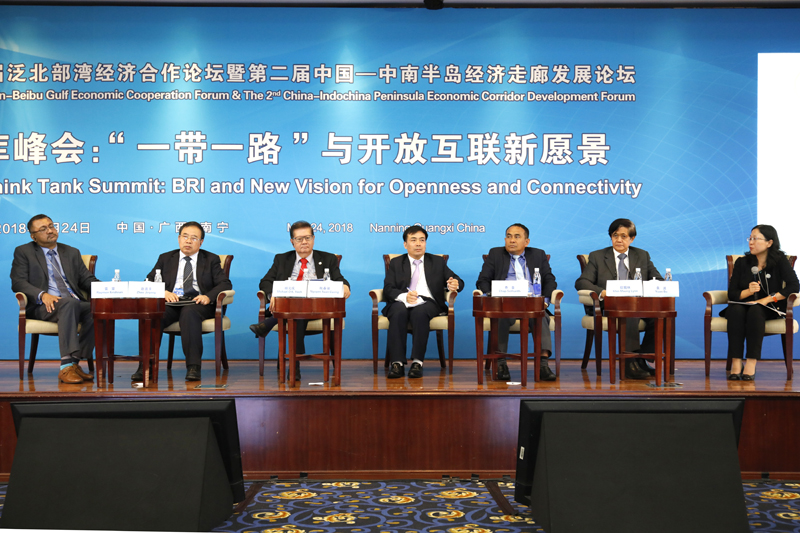
Date: May 24, 2018
Venue: International Conference Center, Liyuan Resort, Nanning, China
Host: The People’s Government of Guagnxi Zhuang Autonomous Region and CDI
Theme: Belt and Road Initiative and New Vision for Openness and Connectivity

